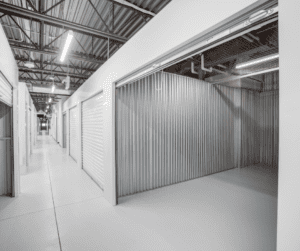How Peer-to-Peer Storage Earns Passive Income
- July 21, 2025
- passive income
Peer-to-peer storage is a simple way to make extra money by renting out unused spaces like garages, driveways,…
Read More
Passive income is earnings derived from a rental property, limited partnership or other business in which a person is not actively involved. It is appealing to investors because it requires little time commitment once the initial work of acquiring an asset is done.
The self-storage industry has grown steadily in recent years, buoyed by demand from both consumers and businesses. According to an industry report, the global self-storage market size was valued at USD 58.28 billion in 2023 and is projected to reach USD 89.94 billion by 2030, expanding at a CAGR of 7.5%.1 With high occupancy rates and stable cash flows, self-storage presents an attractive opportunity for investors to earn passive income.
1 https://finance.yahoo.com/news/self-storage-market-size-89940-103800180.html
Passive income has many key benefits that make it attractive for investors seeking to build long-term wealth.
Firstly, passive income represents consistent cashflow without active work. Once an investment is set up to generate passive income, it can provide regular earnings that continue flowing in with minimal ongoing effort. This allows investors to spend time on other priorities while still earning money from their capital investment. Passive income investments like real estate and dividends from stocks can provide recurring returns for years into the future.
Secondly, passive income provides diversification for an investor’s portfolio. Relying solely on active income sources like a salary can be risky. Building up diverse streams of passive income helps hedge against unexpected changes in one’s professional career or active income source. Passive income like royalties or rental income can continue earning money independently of what’s happening with one’s job or business.
Lastly, passive income can also serve as an effective inflation hedge. The purchasing power of money erodes over time due to inflation. But passive income sources can provide rising earnings over an investment’s lifetime that keep pace with or exceed inflation. For example, rental income from real estate tends to increase alongside inflation over the long run. This helps preserve an investor’s purchasing power. The right passive income investments today can continue generating growing cash flow for decades to come.

Self-storage is based on a simple business model of renting out storage units to customers who need extra space for personal items or business inventory. The main revenue sources are the rental income from storage units and ancillary income like admin fees and commissions on insurance policies for stored items.
There are a few ways for investors to gain exposure to the self-storage industry:
One of the advantages of self-storage investing is the tax benefits. Cost segregation studies can help maximize depreciation deductions in the early years after acquisition. The combination of accelerated depreciation and interest expense can shelter a significant portion of cash flow from taxes in the initial years of ownership (Storable, 2021).

Self-storage offers investors several ways to generate passive income streams:
The primary source of income comes from tenants paying monthly rental fees. Rental rates depend on factors like location, facility size and amenities. Rental yields typically range from 6-8% for self-storage properties.
Beyond base rent, storage facilities can earn ancillary income through additional services and fees such as:
According to this article, ancillary income can account for 10-30% of a facility’s revenue.
As self-storage properties increase in value over time, investors benefit from appreciation. Strong locations can see especially high growth. This capital appreciation adds to total returns.
Self-storage owners can claim depreciation deductions and other tax benefits to lower their effective tax rate. This preserves more passive income.
Expected returns can vary depending on the particular investment, location, and strategy, but on average self-storage offers strong cashflow and total returns for investors. According to industry research:
Cashflow yields typically range from 6-8% annually. As noted in the Forbes article, rental income accounts for the lion’s share of profit for storage facilities, with storage rents providing a reliable stream of monthly cashflow. These rental yields are generally in the 6-8% range according to industry data.
Total returns average 10-15% over the long-term. The CBRE report cites total returns averaging 15-20% historically. More conservative estimates place long-term total returns in the 10-15% range when accounting for capital appreciation. This positions self-storage favorably compared to other real estate sectors.
In summary, self-storage offers investors strong cashflow from reliable rental income, plus the potential for capital appreciation over time. Total returns in the low double digits are achievable for well-run storage facilities in favorable markets. As with any investment, careful research and due diligence is required to identify the best opportunities.

While self-storage investing can provide stable passive income, it does come with risks and challenges that investors need to consider.
One of the biggest barriers to entry is the large amount of capital required for direct investments in physical storage facilities. Buying an existing property or developing a new one involves millions in upfront costs that may deter smaller investors (Source).
If you directly own a storage facility, there are also ongoing management responsibilities to consider. You may have to handle maintenance, repairs, rent collection, security and more. Hiring a property management company can offset these demands, but adds additional expense (Source).
Macroeconomic factors can also impact self-storage investments. In a recession, high unemployment may lead to more renter defaults. New supply coming online could also drive down rents and occupancy rates in a market. Understanding demand drivers in an area is key (Source).
For those looking to dip their toe into self-storage investing, experts recommend starting small to test the local market before making major investments. As noted by Commercial Real Estate Loans, beginning with a single property allows new investors to learn the ropes without being overwhelmed.
It’s also wise for first-time investors to utilize cost segregation to maximize tax benefits. This strategic tax planning method allows certain components of a storage property to be depreciated faster, creating substantial tax deductions in the early years of ownership.
Hiring a professional property management company can greatly reduce the day-to-day workload associated with operating a storage facility. As Storeganise advises, experienced managers can handle tasks like maintenance, rent collection, marketing and leasing so investors can focus on higher-level strategy.
Finally, investing in a real estate investment trust (REIT) provides diversification into the self-storage sector without needing to purchase an entire property. As SmartAsset explains, storage REITs like Public Storage and CubeSmart own hundreds of properties across the country, allowing small investors to gain exposure to the industry’s growth.

Before investing in a self-storage facility, it’s critical for investors to conduct thorough due diligence. This involves reviewing key details about the property’s finances, operations, and physical condition. A proper due diligence process typically examines:
Location – The surrounding area’s demographics, traffic patterns, competition, zoning, and future developments should be analyzed to understand market demand and risks. Site visits at different times of day help assess visibility and accessibility.
Property Condition – An engineering inspection assesses the structural soundness, roof, HVAC, security systems, signage and any deferred maintenance. Environmental assessments check for contamination risks. Units should be inspected to gauge maintenance standards.
Occupancy Rates – Historical occupancies demonstrate the asset’s ability to attract and retain tenants. Potential causes for high vacancies like high rents or poor management should raise red flags.
Management Practices – Reviewing policies for leasing, collections, auctions and tenant retention provides insight on the property’s operations. The quality of on-site managers and systems impacts performance.
Having qualified professionals complete due diligence reduces risks and helps investors make informed purchase decisions.
Self-storage investing can generate strong returns for both individual investors and larger investment vehicles like REITs. Here are a couple real-world examples:
John Doe purchased an existing self-storage facility in Phoenix, AZ in 2010 for $3 million, funded through a combination of equity and debt. Over the next 5 years, John was able to increase net operating income by 30% through revenue management techniques and cost control. He also added climate-controlled units, increasing rents. In 2015, John sold the property for $5 million, realizing an internal rate of return of 18% over the hold period.
Source: https://www.trachte.com/resources/case-studies/
Public Storage is the largest self-storage REIT, with over 2,500 facilities. Since 2000, Public Storage has delivered an average annual return of 16%, supported by steady growth in rental income. Their properties maintained 95% occupancy throughout the 2007-2009 financial crisis. Public Storage continues adding new locations in major metro markets to drive funds from operations (FFO) growth.
Sources: Public Storage Annual Reports, Nareit Data
In summary, self-storage investing provides opportunities for savvy investors to generate abundant passive income streams. While rental incomes from storage units forms the core revenue, investors can also benefit from ancillary income sources as well as appreciation in property values over time. Though not without risks, self-storage tends to provide stable cash flows as demand for storage space continues to grow. By starting small, diversifying across properties, and hiring professional management, investors can position themselves to earn attractive returns from this specialized real estate niche. For investors seeking to add a set-it-and-forget-it asset to their portfolios, self-storage investing can deliver the consistent passive income they desire.
Join The Discussion